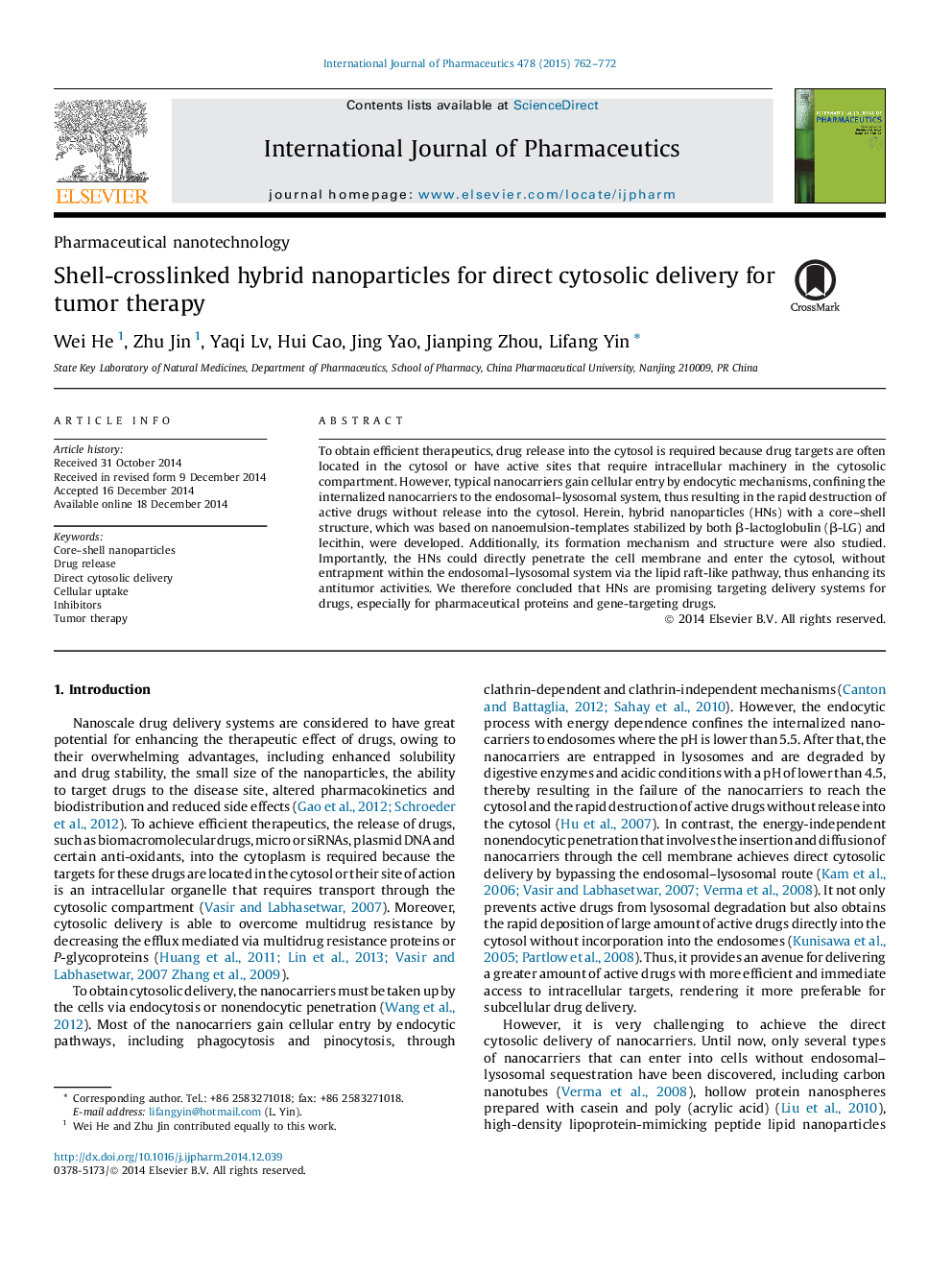| Article ID | Journal | Published Year | Pages | File Type |
|---|---|---|---|---|
| 2501777 | International Journal of Pharmaceutics | 2015 | 11 Pages |
To obtain efficient therapeutics, drug release into the cytosol is required because drug targets are often located in the cytosol or have active sites that require intracellular machinery in the cytosolic compartment. However, typical nanocarriers gain cellular entry by endocytic mechanisms, confining the internalized nanocarriers to the endosomal–lysosomal system, thus resulting in the rapid destruction of active drugs without release into the cytosol. Herein, hybrid nanoparticles (HNs) with a core–shell structure, which was based on nanoemulsion-templates stabilized by both β-lactoglobulin (β-LG) and lecithin, were developed. Additionally, its formation mechanism and structure were also studied. Importantly, the HNs could directly penetrate the cell membrane and enter the cytosol, without entrapment within the endosomal–lysosomal system via the lipid raft-like pathway, thus enhancing its antitumor activities. We therefore concluded that HNs are promising targeting delivery systems for drugs, especially for pharmaceutical proteins and gene-targeting drugs.
Graphical abstractFigure optionsDownload full-size imageDownload high-quality image (116 K)Download as PowerPoint slide
